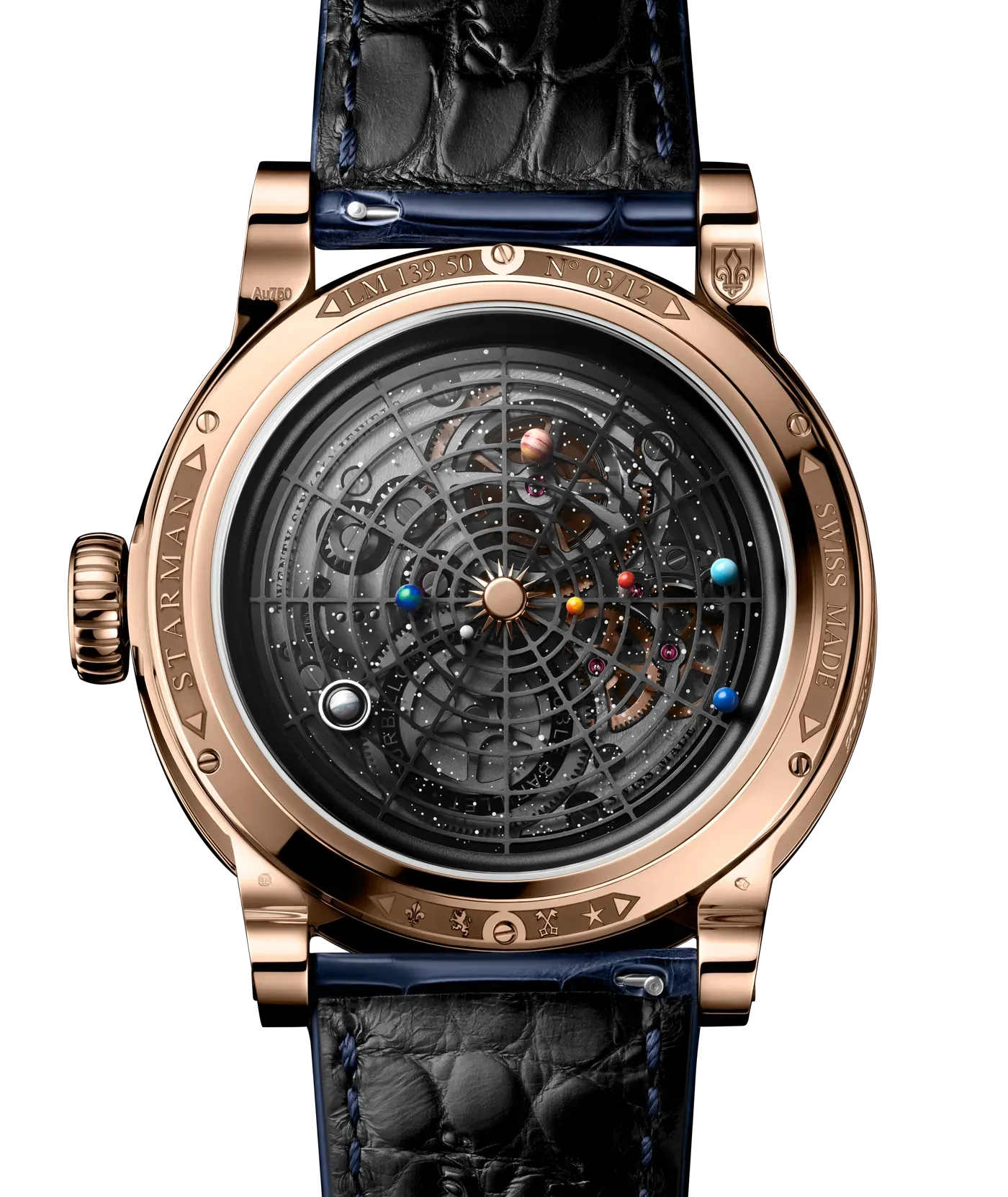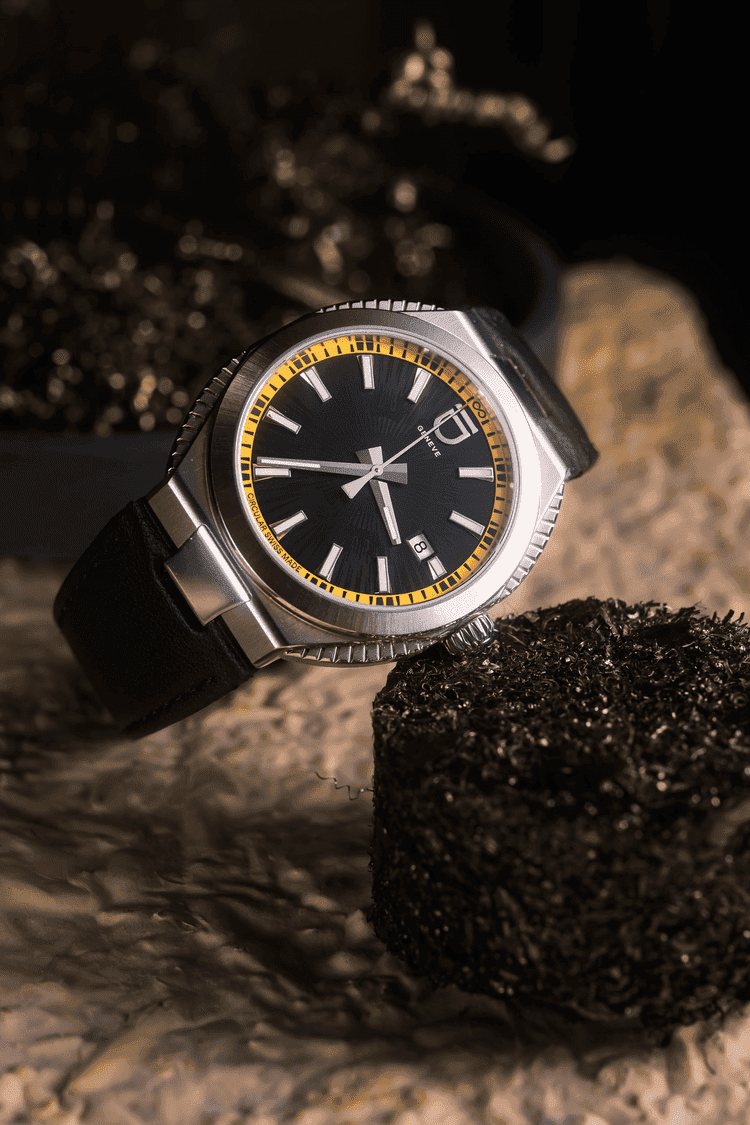
The STARMAN reveals two celestial treasures: the exceptional and rare Jbilet Winselwan, containing the first known traces of life in space, and the fascinatingly structured Gibeon, two meteorites that fuel our dreams of exploration. The STARMAN’s dial is a genuine feat of artistic and technical prowess. Let’s begin with the base cut from the Gibeon meteorite, which fell to earth in prehistoric times and is famous for its emblematic Widmanstätten pattern. At night, the STARMAN reveals a magnificent stellar panorama, creating an appearance of depth that draws us into the immensity of the universe itself. This nightly display is enhanced by the vibrant blue hands and indexes that provide a touch of technical elegance to this exceptional timepiece.

The STARMAN defies gravity in a riveting manner thanks to its flying tourbillon in an off-centre cage. The hand-wound movement is equipped with two barrels in parallel. The system, called “volte face,” has one of the barrels turned upside-down or head-to-tail, so they deliver their energy simultaneously, producing a power reserve of ninety-six hours. It comes in an 18-carat gold case with a diameter of 47.4 millimetres. Its architecture is opulent and complex, mixing brushed and polished surfaces and a stepped bezel that gives it a unique character. Turn the STARMAN around, you will find a fascinating chart of the solar system. The planets, some of which only measure two millimetres in diameter, have been meticulously painted by hand and placed on a grid that seems to float over a star-lit sky.


